Search results for “delaware river basin”

Since ranching and agriculture took hold in the valley in the mid-to-late 1800s, much of the water from the Walker River – which drains two major basins of the rugged eastern Sierra Nevada Mountains before meandering through several flat, wide agricultural valleys and into this desert terminal lake – has been diverted to irrigation, to the extent that in some years no water actually reaches the lake. The water level of the lake has declined so drastically (over 150 feet!) that as of a few years ago the lake can no longer support trout due to its high salinity.
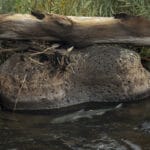
What makes them so remarkable is how typical they are of others in Trout Unlimited. They are simply two ordinary people doing extraordinary work.
3/15/2007 Report: Ground Water Pumping Poses Serious Threat to the West’s Fish and Wildlife Resources and Senior Surface Water Right Holders EMBARGOED UNTIL: March 15, 2007 10:00 A.M. (MST) Contact: Melinda Kassen (303) 440-2937 x100 David Stillwell (303) 440-2937 x105 CA — Brian Johnson (510) 528-4772 ID — Kim Goodman (208) 552-0891 x712 MT —…

Here are six frequently asked questions about taking down the dams and restoring critical populations of wild fish in the Basin.
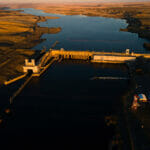
Lower Snake Dam Removal campaign is seeking applicants for the new Snake River Ambassador Program
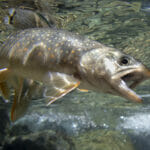
A volunteer chapter in Washington State is going the distance to collect trout and salmon eDNA samples in their home water
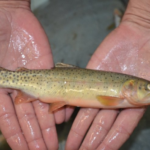
Photo courtesy Colorado Parks and Wildlife. By Garrett Hanks Extinction, as the saying goes, is forever. Reincarnation? Let’s just say the jury is still out. But the case for rebirth grew significantly stronger over the summer when Colorado Parks and Wildlife confirmed the rediscovery of a native trout species long considered extinct. Thanks to a…
Trout Unlimited Statement Dec. 15, 2015 Contact: Scott Yates, director, TU Western Water and Habitat program, syates@tu.org, (307) 349-0753 Randy Scholfield, TU director of Communications, Southwest region, rscholfield@tu.org, 720-375-3961 Trout Unlimited praises new Natural Resources Investment Center (Washington, D.C.) — Interior Department Secretary Sally Jewell unveiled today, at the White House Roundtable for Water Innovation,…
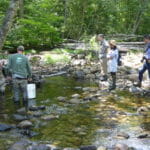
Recently, TU’s Upper Connecticut Home River’s Initiative, along with our partners at the Vermont Fish and Wildlife Department, were invited to speak to employees of the USFWS and the Chinese Department of Wildlife Conservation and Nature Reserve Management, and the Cinese State Academy of Foresty, about our stream restoration and research projects on the Silvio…
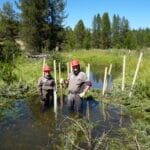
Patagonia celebrates the restoration work of TU’s Northeast Oregon Hand Crew Initiative in a new story and video
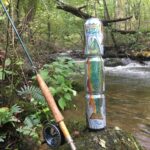
By Mark Taylor Who isn’t drawn to beer featuring really great trout artwork on cans and packaging? And how great is it when that beer is not only super tasty, but also benefits wild trout? SweetWater Brewery’s new fall seasonal, Mosaic Hazy IPA, checks all the boxes. It’s a juicy, fruity, moderately hoppy (65 IBUs)…
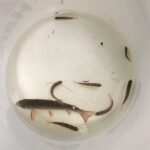
Recent electrofish sampling of Virginia’s Passage Creek, site of a native brook trout repatriation effort, found a mix of stream-bred young of the year trout and transplated adults. By Mark Taylor A trout stream with no trout? That doesn’t make sense, does it? A pair of projects in the East are showing what’s possible when…
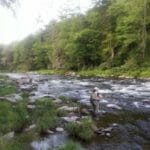
15031253555_7b74450116_o.jpg Dec. 17, 2014 CONTACT: Katy Dunlap, eastern water project director, kdunlap@tu.org, 607-703-0256 Mark Taylor, eastern communications director, mtaylor@tu.org, 540-353-3556 FOR IMMEDIATE RELEASE Trout Unlimited applauds New York decision to protect critical water resources from shale gas impacts Washington, D.C.Today New York Gov. Andrew Cuomo announced that the state will prohibit the practice of high-volume…
Frank Smethurst, Host of Trout Unlimiteds TV Show On the Rise Available for Autographs&Photos New Berlin, Wis. (September 9, 2009) Sportsman Channel and Trout Unlimited will host a cocktail reception during the Fly Fishing Retailer show at booth #1616 on Friday, September 11, from 5 to 6 p.m. The event will, in part, celebrate the…
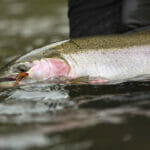
We’ve had 30 years to get these species recovered. More than $17 billion has been spent mitigating the impacts of the lower Snake River hydro system in numerous forms. From habitat improvement, modification of the dams themselves, increased flows to widespread predator management and intense scientific study, the river’s salmon and steelhead are still on the Endangered Species List with no delisting in sight
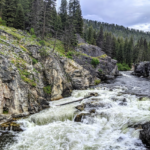
With a few real exceptions, juvenile smolts in Idaho rear in some of the West’s best habitat, but on their way to the Pacific Ocean they must traverse eight dams, including four on the lower Snake River.

A brown trout caught during an electroshocking fish survey on the Big Cimarron River in Colorado. Trout Unlimited photo. By Cary Denison The Big Cimarron River shouldn’t go dry. This may seem like an obvious declaration about any trout stream. But the truth is, here in Colorado’s Gunnison Basin, and many other places in the…
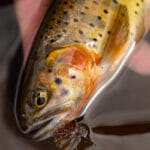
TU, BLM ink $8.867 million partnership for watershed restoration across the West.

Sun Creek, Upper Klamath Basin, Oregon. Photo: National Fish Habitat Partnership Trout Unlimited’s brand of conservation is, above all, pragmatic. Nowhere is this more evident than in the upper Klamath River basin, in southern Oregon, where TU is working with ranchers, resource agencies, tribes and other partners to improve streamflows and fish passage for native…
FOR IMMEDIATE RELEASE Nov. 19, 2015 Contact: Drew Peternell, dpeternell@tu.org, (303) 204-3057 David Nickum, dnickum@tu.org, (720) 581-8589 Randy Scholfield, TU communications, rscholfield@tu.org, (720) 375-3961 TU: CO water plan provides support for healthy rivers Collaboration, innovation will help achieve state water goals (Denver)Trout Unlimited praised the final Colorado Water Plan unveiled today by the Colorado Water…

















